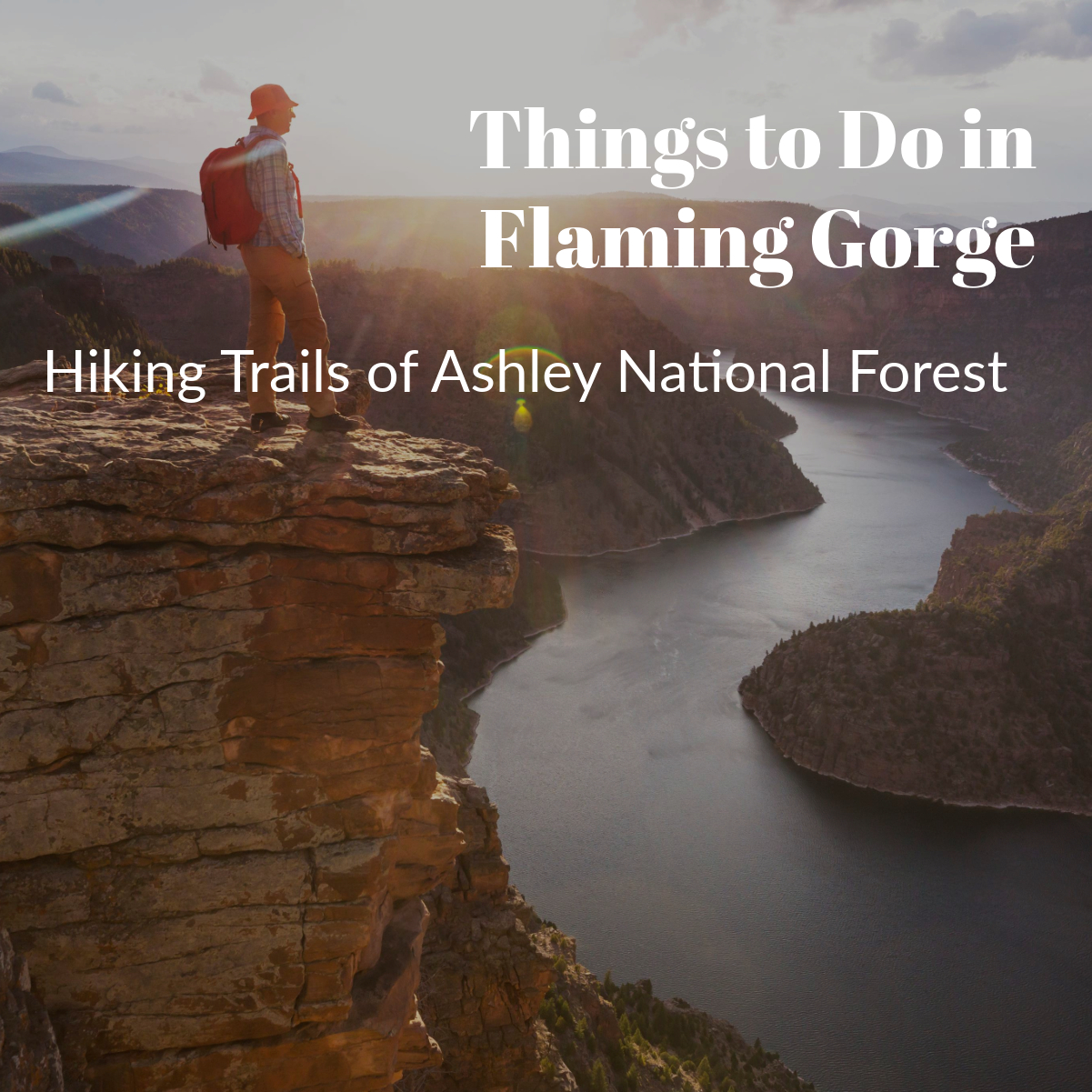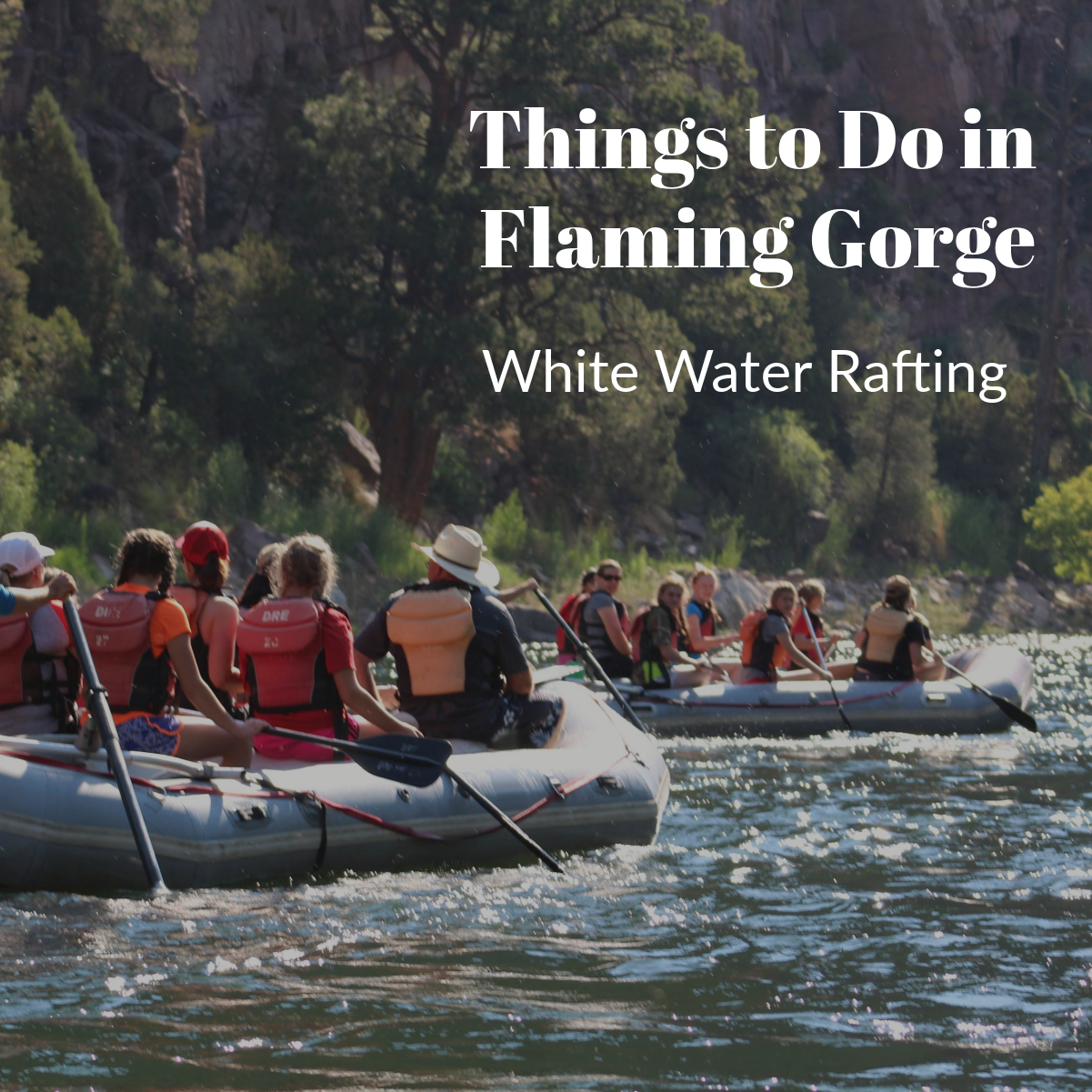Things to Do in Flaming Gorge
Introduction to Things to Do in Flaming Gorge
Nestled in the rugged heart of the West, Flaming Gorge emerges as an oasis of adventure and serenity, draped in breathtaking landscapes and azure waters. Renowned for its array of activities catering to every age and interest, Flaming Gorge Utah draws visitors to its expansive embrace. Whether you’re a thrill-seeker or a nature lover, the area’s vibrant tapestry of experiences ensures that the question of “Things to do in Flaming Gorge” is met with a plethora of exhilarating and peaceful options. Here is our list of top things to do in Flaming Gorge, Utah.
White Water Rafting
On the top of our list of things to do in Flaming Gorge is white water rafting. From the gentle nudges of class II rapids to the heart-racing class IV tumults, Flaming Gorge lake and its adjoining river passages serve as nature’s playground for the rafting connoisseur. Dinosaur River Expeditions invites adventure-thirsty guests to journey through the Green River’s legendary canyons and frothy waters. With their experienced river guides at the helm, voyagers navigate the river’s twists and turns while absorbing the surrounding wilderness’s grandeur.
Whether navigating the Gates of Lodore or floating beneath the towering red cliffs near Flaming Gorge Dam, every stroke of the paddle draws you deeper into the river’s mesmerizing story. The Green River carves a path through geological time, revealing layers of history inscribed upon canyon walls—making white water rafting more than just a sport but an immersive expedition into the heart of the Earth itself. Our guides at Dinosaur River Expeditions don’t just lead the way; they enhance the narrative of your adventure with rich tales of the river’s past, great food, and insider knowledge that only a local outfitter could possess.
Fishing in Flaming Gorge
For any type of angle, fishing should be on your list of things to do in Flaming Gorge. It is a paradise for anglers, boasting some of the most sought-after fishing in Utah. Beneath the surface of the pristine Flaming Gorge Reservoir and the legendary Green River, Brown Trout thrive, providing an exceptional angling experience. Anglers can take their pick from the tranquil lake settings to the dynamic river stretches that accommodate both fly fishing and traditional techniques. With abundant fish populations and diverse habitat, a day spent with a rod and reel at Flailing Gorge is sure to reward you with both peace and the thrill of the catch.
Boating and Water Sports
The vast Flaming Gorge Reservoir beckons water enthusiasts with its crystal clear waters and expansive area. Boating here is more than an activity; it’s a chance to glide across 91 miles of open water, surrounded by stunning geological formations and a serene atmosphere. If you’re into more active pursuits, kayaking and paddleboarding, offer an engaging way to explore the coves and inlets that dot the shoreline. With rentals readily available, those new to water sports or seasoned experts will find that Flaming Gorge accommodates all levels, allowing you to craft the perfect day on the water to suit your passions.
Wildlife Viewing and Photography
As a haven for an array of wildlife, Flaming Gorge offers exceptional opportunities for viewing and photography. Keep your binoculars close and your camera ready to capture images of Rocky Mountain Elk or Mule Deer roaming freely. You might also spot the majestic flight of a Bald Eagle or observe the industrious play of beavers near the water’s banks. Wildlife viewing in this part of Utah is a gentle reminder of our place within the natural world, offering moments of connection with creatures big and small against an awe-inspiring backdrop.
These sections reveal the more tranquil side of Flaming Gorge, focusing on the restorative and reflective experiences available. Should this resonate with you, I’ll continue to build on our comprehensive guide to the wonders awaiting at Flaming Gorge.
Camping Amidst Nature
For those drawn to the embrace of the great outdoors, camping at Flaming Gorge is an experience unlike any other. With over 600 campsites dotting the region, you’ll find the perfect spot to set up your home-away-from-home amidst stunning scenery and the serene sounds of nature. Each site offers a unique perspective of the gorge, whether you are by the water’s edge or under the canopy of pines.
Amenities at various camping locations cater to comfort, ensuring your stay is as relaxing as it is adventurous. You’re not just pitching a tent; you’re opening the door to starlit skies and a peaceful retreat in the wild.
Hiking Trails of Ashley National Forest

Scenic Drives Around Flaming Gorge
If you prefer to experience the stunning landscapes of Flaming Gorge at a more leisurely pace, the scenic drives around the area are a must. The Flaming Gorge-Uintas National Scenic Byway is a standout, winding through 150 miles of picturesque routes with numerous overlooks.
Don’t miss the Red Canyon Overlook, where you can marvel at the panoramic views of the gorge’s brilliant red rock formations and the shimmering reservoir below. These drives are perfect for photography lovers and those who want to soak in the landscape without breaking a sweat.
Exploring Historical Sites
Flaming Gorge is rich with history, offering visitors a glimpse into the past. Jarvie Ranch in Brown’s Park is a must-visit, a living museum that tells stories of early pioneers, outlaws, and cattle ranchers who once roamed these lands. The ranch is preserved much as it was in the late 19th century, providing a tangible connection to the region’s storied past. Wander through the historic buildings and envision life as it was during the days of Butch Cassidy and the Sundance Kid. It’s an educational and inspiring experience that adds depth to your visit to Flaming Gorge.
Brown’s Park is not just a historical treasure trove; it also marks the starting point for the exhilarating Gates of Lodore rafting trip. This trip weaves together the threads of history and adventure, creating a rich tapestry of experiences as you navigate the Green River. As your raft glides through the Gates of Lodore, you’ll feel the thrill of the rapids and the awe of the canyon’s towering walls, much like the early explorers who first braved these waters.
Flaming Gorge Dam Tour
To better understand the region’s significance, take a tour of the Flaming Gorge Dam. Constructed in the 1960s, this engineering marvel stands as a testament to human ingenuity and its crucial role in water management and power generation. Tours typically provide insights into the dam’s construction, its impact on the surrounding environment, and its importance to the communities it serves. The tour also offers stunning views from the top of the dam, a panoramic treat that combines education with breathtaking scenery.
Mountain Biking Adventures
Flaming Gorge offers fantastic mountain biking opportunities for those who crave the thrill of rugged trails and fast descents. The forested areas within Ashley National Forest provide a picturesque backdrop for your ride, with trails catering to beginners and seasoned bikers. Popular routes such as the Bear Canyon Trail and the Mustang Ridge Trail feature varied terrain, from gentle slopes to challenging climbs. Each trail rewards riders with unparalleled views, fresh mountain air, and the satisfaction of conquering the rugged landscape. Mountain biking in Flaming Gorge is the ultimate way to experience the dramatic beauty and wild spirit of Utah’s great outdoors.
 Things to do in Flaming Gorge – Conclusion
Things to do in Flaming Gorge – Conclusion
Flaming Gorge stands as a testament to the rich tapestry of natural beauty and adventure that Utah has to offer. From heart-pounding white water rafting on the Green River to tranquil moments fishing by the lake, the diverse range of activities ensures there’s something for everyone. Whether you’re camping under starlit skies, navigating scenic hikes, or exploring historical sites, Flaming Gorge offers a multifaceted experience that leaves a lasting impression. Plan your visit and discover why Flaming Gorge is a top destination for outdoor enthusiasts and adventure seekers alike. The memories you create here will be cherished for a lifetime.
Ready for an unforgettable adventure? Book your Flaming Gorge River Trip with us today and experience the thrill and beauty of white water rafting like never before!



 Things to do in Flaming Gorge – Conclusion
Things to do in Flaming Gorge – Conclusion

